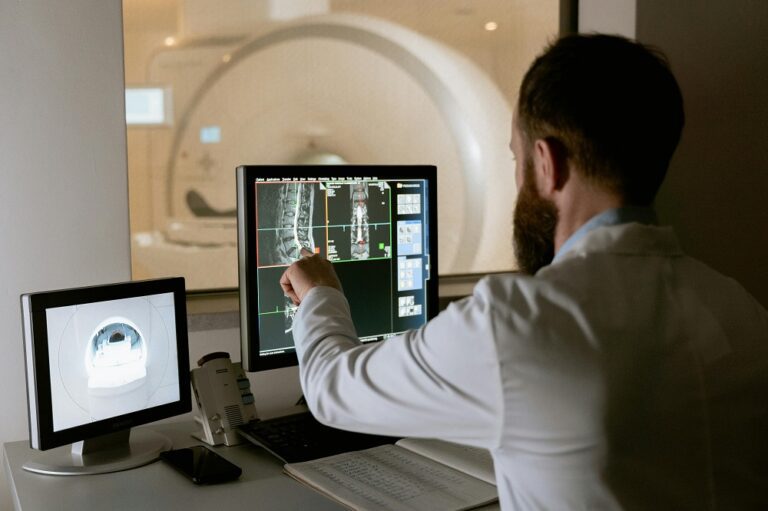If your doctor has an extremely smart helper beside them, your notes can be transferred to this helper but that’s not all. It scans and receives your X-rays, your lab tests, and even your DNA simultaneously. This is not just a dream anymore because of multimodal integration.
In this new field, Large Language Models or LLMs, which power most AI chatbots, are being paired with medical images and other vital health data. Healthcare as we know it will change due to information about medical LLM. Understanding and treatment of diseases will be transformed so that it can get smarter and be tailored to every individual according to their needs.
What is Medical LLM
The whole concept behind this technology is simple. The human body is intricate and doctors get medical data from lots of different places. A radiologist interprets a scan while the technician checks your laboratory work and your doctor reviews your history. All the pieces do fit, but dashing around, it is hard to match them up, even for brilliant doctors. Multimodal integration addresses this issue by developing AI systems that can not only process and understand this huge amount of data, but also fuse all of them at the same time so that it is easier to understand your body and your issues.
Why are the AI Chatbots Key
LLMs are popular nowadays because they have been created to understand and copy reading and writing human language. They can summarize huge bodies of research. They can take notes on your patients and even answer tough medical questions to patients if they find things too complicated.
But by themselves, these models don’t know what only the words mean. The actual breakthrough comes when we cause these LLMs to “look” and engage with other information. They are trained on a lot of medical data like reading images from xrays and scans and structured records. They not only view these as pixels or numbers, but as components of the health story that they already possess. For example, an LLM trained in this manner can look at a chest X-ray and read your report: “45-year-old smoker with non-quitting cough.” Coupled with a family history, the AI has all the individual pieces of information together whereas different doctors have them in the beginning and the information comes together after some time when only humans are handling things. The AI immediately groups all this information of an individual patient together and suggests possible diagnosis and treatments to the doctor.
Getting the Whole Story: Images Matter
Medical imaging like X-rays, CTs, MRIs, and biopsy slides are all essential information to know what is going on within one patient. And now, AI systems help read these images one at a time and they don’t just point out the tumor but also provide necessary context for the doctors. They take what the tumor looks like, the doctor’s written account, the patient’s test results showing inflammation, and even the genetic predisposing factors. That places everybody in a much better position to comprehend the patient’s condition.
It has the ability to spot small, potential cancer markers which would not be seen by busy doctors or might even be impossible through the naked eye.
More Than Pictures: All the Data Working Together
Multimodal integration adds all the necessary information present in a patient’s record so that any possible disease and treatment can be understood.
- Genetic Information: genetics and their role in a person’s health is complex. An LLM can assist in interpreting what this data means. It translates certain gene alterations into what is displayed on a scan, and then it recommends the optimal treatment to pursue.
- Electronic Health Records (EHRs): The concrete lab results like heart rate and blood pressure are combined with the observations of the doctor written in a prescription. The LLM processes it all together and categorises them, so nothing is lost in the disjointed notes.
- Wearable Data: A lot more information is available nowadays through things like smart watches and activity trackers. Sleep activity, average heart rate, etc. are important markers that can tell if something is wrong. The AI can detect less activity with a shift in a blood test, showing that an issue is starting.
By combining all of these different pieces, the AI is really now a thinking assistant to the doctor. It’s using all of the facts and not part of them to make its suggestions and help both patients and doctors along the way.






